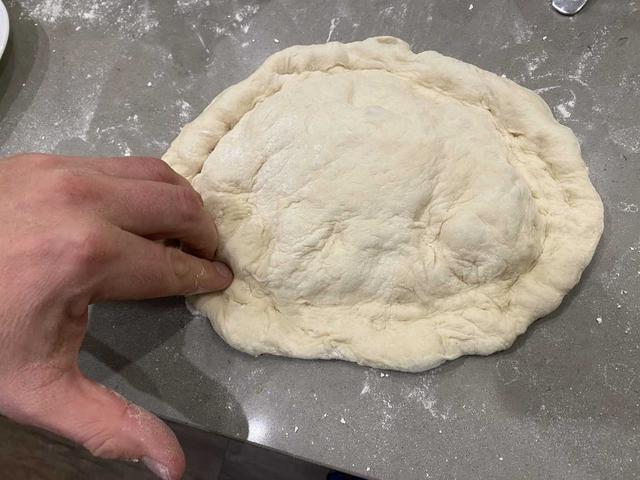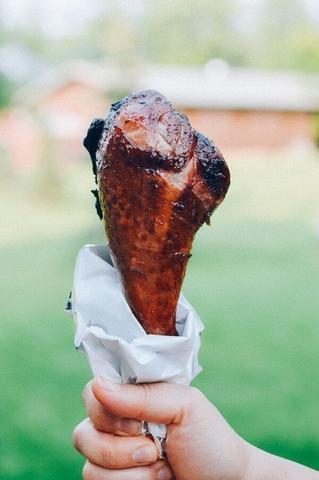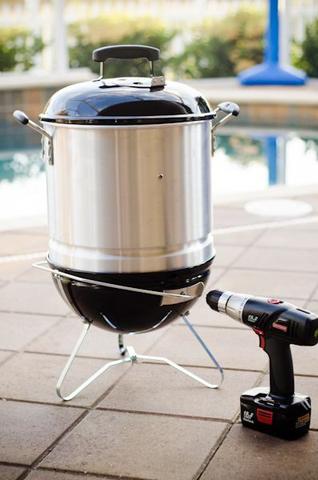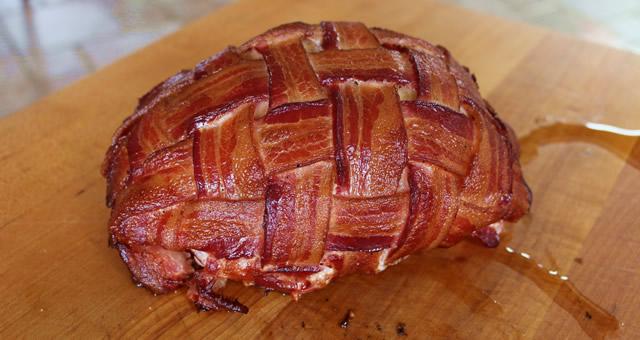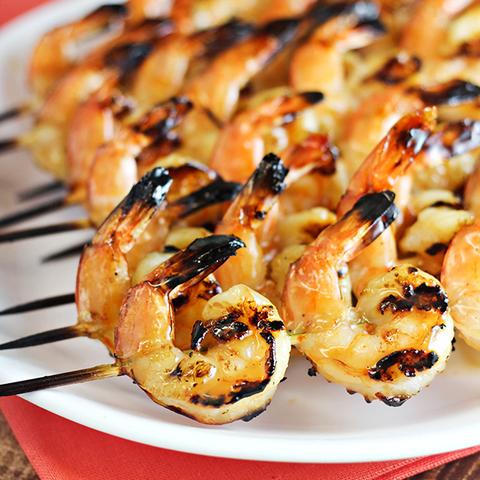
“Discover the Ultimate Steak Experience with Tomahawk Steaks: Indulge in the Juiciest, Most Flavorful Cuts of Beef, Perfectly Sized for Your Epic Appetite!”
What is a Tomahawk Steak? Cut Explained
A Tomahawk Steak is essentially a bone-in ribeye that’s been “frenched.” Frenching is the process of cutting away fat and meat from the bone (mainly for aesthetic reasons). In the case of a Tomahawk steak, the meat and fat are cut away from the long short rib bone with the ribeye still attached. The size of the tomahawk is dictated by the thickness of the rib bone. Separation occurs between the bones and as a result, the meat portion is typically 2-3″ thick and weighs 2-3 lbs.
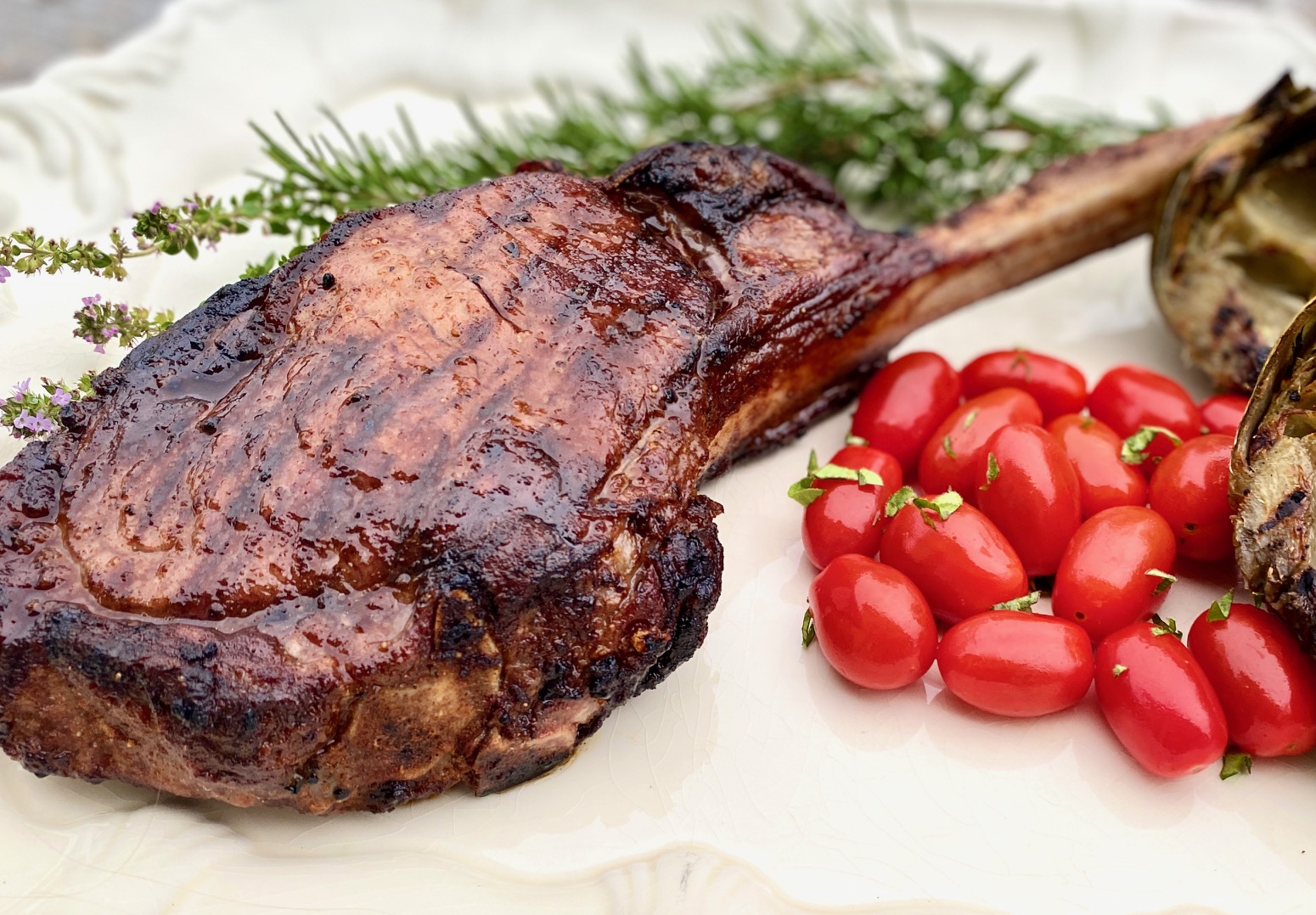
In terms of etymology, the word “Tomahawk” originates from Powhatan for tamahaac which means “ax.” The word steak is from the Old Norse for “steik.” This word translates to “meat roasted on a spit.” However, the origin story of the Tomahawk steak isn’t explicitly outlined. It’s not hard to assume that the name stems from the resemblance to a Native American Tomahawk/tamahaac or ax.
Why is it Called a Tomhawk Steak?
The Tomahawk steak gets its name from the resemblance it has to a Native American Tomahawk or ax. The word “Tomahawk” originates from Powhatan for tamahaac which means “ax.” The steak is essentially a bone-in ribeye that has been “frenched,” meaning the fat and meat are cut away from the long short rib bone with the ribeye still attached. The size of the tomahawk is determined by the thickness of the rib bone, resulting in a meat portion that is typically 2-3″ thick and weighs 2-3 lbs.
The Tomahawk steak is often confused with the Cowboy Steak, but they are different cuts. A cowboy steak is a bone-in ribeye that may or may not have a frenched bone. If the bone is frenched and less than 5″ in length, it’s considered a cowboy steak. If the bone exceeds 5″, it’s classified as a Tomahawk steak.
The Tomahawk steak comes from the Rib Primal, which is sourced from the beef forequarter. It includes meat from the 6th to 12th ribs and consists of three major muscles: Longissimus Dorsi (eye of ribeye), Spinalis Dorsi (ribeye cap), and Complexus. These muscles are held together by a tender sinew membrane and large swaths of fat, which contribute to flavor as they render.
In terms of cooking, a Tomahawk ribeye requires some adjustments compared to a standard ribeye steak. The main difference lies in timing certain tasks like searing and resting. Dry-brining with salt before cooking helps draw out moisture and break down muscle proteins for better flavor and tenderness. Searing on high heat for about 5 minutes per side creates desirable cross-hatched grill marks, followed by finishing off in an oven at lower temperature to bring up internal temperature. Resting the steak for 10 minutes allows the juices to reabsorb and redistribute.
What Beef Primal Does the Tomahawk Come From?
The Tomahawk steak is sourced from the Rib Primal, which comes from the beef forequarter. It is separated from the beef chuck at the 5th and 6th ribs and from the loin between the 12th and 13th ribs. The rib primal includes meat from the 6th to the 12th rib.
The Tomahawk steak is often confused with the Cowboy Steak. A cowboy steak is essentially a bone-in ribeye that may or may not have a frenched bone. If the bone is frenched, it is less than 5″ in length; If the bone exceeds 5″, it’s a Tomahawk steak.

There are three major muscles found in a Tomahawk/ribeye steak. They are the Longissimus Dorsi (eye of ribeye), the Spinalis Dorsi (ribeye cap), and the Complexus. The Longissimus Dorsi or eye of ribeye is surrounded by two kernels of fat called spinalis dorsi and complexus. The spinalis dorsi, also known as rib crown, has superior intramuscular fat and is considered to be the most desirable portion of the ribeye.
In short, yes and no. A prime rib is a large cut of beef that contains only the best part of the animal’s rib, cut between ribs 6 and 12. It features a thick fat cap and lots of intramuscular fat. A ribeye steak, on the other hand, is cut from the rib roast prior to being cooked. The way they are cooked and served also differs.
The process of cooking a Tomahawk ribeye steak involves salting and pepperin the steak, searing it on high heat for a specific time period, finishing it off in the oven, and allowing it to rest before serving. The steak can be seasoned with salt and pepper and left to stand for 40-50 minutes to allow the salt to act as a dry brine. It is then seared on a grill or cast-iron skillet on high heat for a desired cross-hatched pattern, before being finished off in the oven at a lower temperature. After cooking, the steak should be allowed to rest for about 10 minutes for the juices to reabsorb and redistribute.
Muscles Found in a Tomahawk Steak
The Tomahawk steak is sourced from the Rib Primal, which includes meat from the 6th to the 12th rib. Within the Tomahawk steak, there are three major muscles: the Longissimus Dorsi (eye of ribeye), the Spinalis Dorsi (ribeye cap), and the Complexus. The Longissimus Dorsi is the meatiest portion of the rib subprimal and contains most of the marbling, which contributes to flavor and tenderness. The Spinalis Dorsi, also known as the rib crown, sits above the eye of the primal and has superior intramuscular fat. The Complexus muscle is smaller and may not always be present in every Tomahawk steak.
Longissimus Dorsi or Eye of Ribeye
The Longissimus Dorsi, also known as the Eye of Ribeye, is the meatiest portion of the rib subprimal. It is the center or “eye” of the ribeye cut. This muscle collects more intramuscular fat or marbling, which contributes to its flavor, tenderness, and juiciness. The Longissimus Dorsi is surrounded by two kernels of fat called the Spinalis Dorsi and the Complexus.
The Spinalis Dorsi, also known as the ribeye cap or rib crown, is located above the eye of the rib primal. It is separated from the Longissimus Dorsi by a kernel of fat. The Spinalis Dorsi has superior intramuscular fat compared to other muscles in the ribeye. It is highly desirable due to its visual appeal and flavor.
The Complexus is the smallest muscle of the ribeye and may not always be present depending on where the steak was cut from. It is similar to the Spinalis Dorsi but in smaller quantity.
These three muscles are held together by a tender sinew membrane and large amounts of fat, both of which contribute to flavor when they render during cooking. The Tomahawk steak, being sourced from the Rib Primal, contains all three muscles and offers a flavorful and juicy eating experience.
Spinalis Dorsi or Ribeye Cap or Deckle
The Spinalis Dorsi, also known as the Ribeye Cap or Deckle, is one of the three major muscles found in a Tomahawk/ribeye steak. It is the cap of the ribeye and is located above the eye/center of the cut. This muscle is separated from the Longissimus Dorsi (eye of ribeye) by a kernel of fat.
Of the three muscles found on the ribeye, the Spinalis Dorsi has superior intramuscular fat, also known as marbling. This marbling contributes to flavor, tenderness, and juiciness of the meat. Due to its desirable characteristics, it is considered the most sought-after portion of the ribeye.
The Spinalis Dorsi can vary in size depending on where the steak was cut from. If a tomahawk steak was cut from the front of the primal, there may be a small piece of complexus muscle present alongside it. However, compared to the Spinalis Dorsi, this muscle is significantly smaller in size.
Complexus
The complexus muscle is the smallest muscle found in a Tomahawk/ribeye steak. It may not even be present in some cases, depending on where the steak was cut from. If the tomahawk was cut from the front of the primal, you will get a small piece of complexus muscle, which is quite literally just a bite or two. The complexus muscle is similar to that of the spinalis dorsi (ribeye cap), but you get significantly less of it. This comparison between the two muscles is quite popular and one of the reasons why the Tomahawk steak is considered “controversial.” The presence of the complexus muscle adds variety and texture to the overall eating experience of a Tomahawk steak.
Tomahawk vs Ribeye vs Prime Rib
A Tomahawk steak is essentially a bone-in ribeye that has been “frenched,” meaning the fat and meat are cut away from the long short rib bone while still keeping the ribeye attached. The size of a Tomahawk steak is determined by the thickness of the rib bone, typically resulting in a 2-3 inch thick steak weighing 2-3 pounds. The name “Tomahawk” likely comes from its resemblance to a Native American tomahawk or ax.

The ribeye steak is sourced from the same primal cut as the Tomahawk steak, known as the rib primal. It consists of three major muscles: the Longissimus Dorsi (eye of ribeye), the Spinalis Dorsi (ribeye cap), and the Complexus. The marbling found in these muscles contributes to flavor, tenderness, and juiciness. Among these muscles, the Spinalis Dorsi is considered the most desirable portion due to its superior intramuscular fat.
Prime rib, on the other hand, refers to a large cut of beef that contains only the best part of the animal’s rib between bones 6 and 12. It features a thick fat cap and lots of intramuscular fat. While both Tomahawk and ribeye steaks come from the rib primal, prime rib is sliced from a cooked rib roast rather than being cooked as individual steaks. Ribeye steaks are typically cooked at high heat, while prime ribs are slow-cooked at lower temperatures in an oven.
How to Cook a Tomahawk Steak
The first step in cooking a Tomahawk steak is to salt and pepper the steak on both sides and allow it to stand for about 40-50 minutes. This process allows the salt to act as a dry brine, drawing out the meat juices and creating its own concentrated brine. It also helps in breaking down muscle proteins and tenderizing the meat.
Next, preheat your grill or oven. If using a grill, heat it to 400 degrees Fahrenheit. If using an oven, preheat it to 350 degrees Fahrenheit.
Once the salt has denatured the meat and the grill/oven is at the correct temperature, sear the steak on high heat. For a cross-hatched pattern, sear each side of the steak for 2 minutes and 30 seconds, rotating it by a quarter turn halfway through. This will create those desirable grill marks on the surface of the meat.
After searing, move the steak to indirect heat (off direct flame) and continue cooking until desired doneness is reached. Use a meat thermometer to check for internal temperature; medium-rare is typically around 130 degrees Fahrenheit.
Once cooked to your liking, remove the steak from heat and let it rest for at least 10 minutes before slicing into it. This allows the juices to reabsorb and redistribute throughout the meat.
1. Dry Brining the Steak
Dry brining is a process where salt is applied to the steak and allowed to sit for a certain period of time. This helps to draw out the meat juices, dissolve the salt, and create a concentrated brine. The salt also breaks down muscle proteins, resulting in more tender meat. The steak should be salted on both sides and left to stand for about 40-50 minutes.
Once the steak has been dry-brined and the grill or oven is preheated, it’s time to sear the steak. If using a pellet grill, spraying duck fat on the surface of the grates can help prevent sticking. The steak should be placed on the grates at a 45-degree angle and pressed down with a spatula or hand to ensure good contact. After 2 minutes and 30 seconds, quarter turn the steak to create cross-hatch marks and sear for another 2 minutes and 30 seconds.
After searing, move the steak off the high heat onto regular grill grates or in an oven-safe skillet. This allows for more even cooking and brings up the internal temperature of the steak. Once inside, wrap the steak in foil to retain heat and place it in an oven preheated to 350 degrees Fahrenheit. In a cast iron skillet with melted butter, cook for about 10 minutes total while basting every few minutes.
After cooking, remove the steak from heat and allow it to rest for at least 10 minutes before slicing or serving. This allows for proper redistribution of juices within the meat and ensures optimal tenderness. The internal temperature of medium-rare/medium should reach between 131-140 degrees Fahrenheit.
2. Getting the Grill Up to Temperature
To cook a Tomahawk ribeye steak, it is important to get the grill up to temperature. Preheat the grill to 400 degrees Fahrenheit and place GrillGrate searing grates on the grill grates. This process takes roughly 15-20 minutes.
3. Searing the Steak
After allowing the salt to denature the meat and preheating the grill to 400 degrees Fahrenheit, it’s time to sear the steak. Using duck fat as a spray, place the Tomahawk steak at a 45-degree angle on the preheated GrillGrates. Press into the meat with a spatula or your hand for proper contact with the grates. Let it sear for 2 minutes and 30 seconds before quarter-turning it and searing for another 2 minutes and 30 seconds. This technique creates a desirable cross-hatched pattern on the surface of the steak.
Repeat this process on both sides of the steak for a total of 5 minutes of searing per side. After searing, move the steak to the regular grates of the grill away from hot zones to allow it to come up in internal temperature. Let it rest on these grates for an additional 5 minutes before transferring it to finish cooking in the oven.

4. Finishing the Tomahawk in the Oven
After searing the steak, it is time to finish it off in the oven. Preheat the oven to 350 degrees Fahrenheit while the steak rests on a plate wrapped in tin foil. This will allow the steak to continue cooking and retain its heat.
Next, take a cast iron skillet and add half a stick of butter to it. Place the skillet in the preheated oven for about 60 seconds, or until the butter has melted. Carefully remove the steak from the tin foil and place it onto the hot cast iron skillet.
Close the oven and let the steak cook for 2 minutes. After 2 minutes, use a spoon to tilt the skillet and baste the steak with the melted butter for about 10 seconds. Close the oven again and wait another 2 minutes before repeating this basting process. Repeat this process three more times, for a total of 10 minutes.
At this point, check that the internal temperature of the steak is around 130 degrees Fahrenheit. Once it reaches this temperature, remove it from the cast iron skillet and place it back on the plate. Allow it to rest for at least 10 minutes so that juices can reabsorb and redistribute within the meat.
During this resting period, smaller steaks may not require as much time, but with a larger Tomahawk steak like this one, it is important to let it rest properly before serving. As a general rule of thumb, you can rest steaks for about 5 minutes per inch of thickness.
By following these steps, you can achieve a perfectly cooked Tomahawk steak that is juicy and flavorful throughout.
5. Resting the Steak
After the steak has finished cooking, it is important to let it rest before cutting into it. Resting allows the juices within the meat to redistribute and reabsorb, resulting in a juicier and more flavorful steak. For a Tomahawk steak, it is recommended to rest for at least 10 minutes.
During this resting period, cover the steak loosely with foil to retain heat and prevent it from cooling too quickly. This will also help to keep the steak warm while you prepare any accompanying dishes or sauces.
It is worth noting that smaller steaks may not require as long of a resting time, but due to its larger size, the Tomahawk steak benefits from a longer rest period. As a general guideline, allow the steak to rest for approximately 5 minutes per inch of thickness.
During this time, resist the temptation to cut into the steak right away as this can cause the juices to escape and result in a drier final product. Instead, use this opportunity to prepare your plate and garnishes, allowing anticipation to build before slicing into your perfectly cooked Tomahawk steak.
Final Thoughts
The Tomahawk steak is a unique and impressive cut of meat, featuring a long rib bone with the ribeye still attached. It is essentially a bone-in ribeye that has been “frenched,” meaning the fat and meat have been cut away from the bone for aesthetic purposes. This results in a thick, flavorful steak weighing around 2-3 pounds.
The name “Tomahawk” likely comes from its resemblance to a Native American tomahawk or ax. It should not be confused with the Cowboy Steak, which may or may not have a frenched bone. If the bone is less than 5 inches in length, it is a Cowboy Steak; if it exceeds 5 inches, it is a Tomahawk steak.
The Tomahawk steak is sourced from the Rib Primal and includes three major muscles: the Longissimus Dorsi (eye of ribeye), the Spinalis Dorsi (ribeye cap), and the Complexus. These muscles are held together by tender sinew membrane and fat, which contribute to flavor and juiciness. The Spinalis Dorsi, also known as the rib crown, is considered the most desirable part of the ribeye due to its superior intramuscular fat.
In conclusion, the tomahawk steak is a colossal cut of meat known for its impressive size and presentation. With its long bone resembling a tomahawk axe, this succulent steak offers a unique dining experience. Whether you’re a meat lover or seeking to impress your guests, the tomahawk steak’s generous portion and exquisite flavor make it an exceptional choice.
Learn More About Grilling
If you want to learn more about grilling, check out these other helpful resources!

